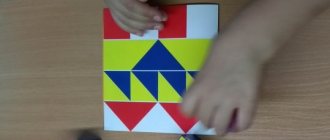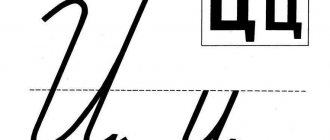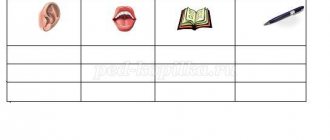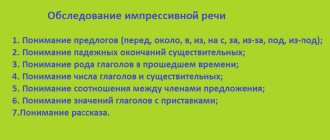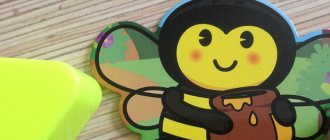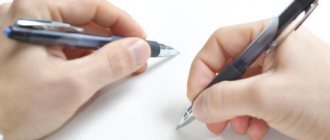History taking
The medical history includes the following information:
- health status and presence of speech disorders in parents and immediate relatives;
- analysis of the child’s overall development;
- the presence of diseases in the mother during pregnancy and injuries during childbirth;
- stress and physical trauma in childhood;
- speed of speech formation;
- conditions of upbringing (type of institution and the child’s adaptation to it, learning two or more languages, communication with children who have speech defects);
- psychological climate in the family (conflicts, excessive guardianship, attitude of family members towards the child’s defect);
- the presence of diseases of the organs of vision and hearing.
Breathing exercises for the formation of correct speech breathing
All exercises for logoneurosis are used for both adult patients and children.
The category of exercises against stuttering is aimed at developing the correct combination of inhalation and exhalation with pronounced sounds. During the lesson, melodiousness and fluency of pronunciation are trained.
How to breathe correctly when stuttering so as not to stutter?
"Flower shop"
The patient imagines himself in front of a flower shop window.
One of his hands is on his stomach, the other is in a free position at the side. Taking a short, intense breath through his nose, he “smells the flower.” At the same time, the stomach moves forward.
After holding your breath for a second, a long exhalation “pffff” follows through the oral cavity, the stomach and diaphragm go back.
"Candle"
A thin strip of paper about 5 cm wide represents a candle flame. The patient needs to blow on it for as long as possible.
"Singer"
You should sing vowel sounds, then their combination (aaauuuu, oooooooooo, etc.), a combination of sonorant consonants and vowels (laaa, mooo, etc.). Then singing is performed with increasing and decreasing volume of sound.
Psychological for voice development
Logoneurosis is associated with psychosomatics, an unstable nervous system, stress and anxiety, which provoke muscle and respiratory spasms.
When conducting training, it is important that the child or adult is calm and relaxed
A breathing exercise is perfect for this, with which it is recommended to start the lesson: you need to take a comfortable position and close your eyes. Take a deep, long breath through your nose. Hold your breath for a few seconds, counting to five and also exhale deeply. By repeating a simple technique five to seven times, the patient will be prepared for further practice.
Meditation gives effective results. Having taken a comfortable position, you need to relax and close your eyes, imagining something pleasant.
Calm music or sounds of nature in the background will help you achieve peace faster. Take a deep breath and let out a long “mmmmm” as you exhale.
Strelnikova method
The author’s method of A.N. is popular among speech therapists. Strelnikova. The exercises are easy to perform, allowing you to practice on your own at home. The exercises are aimed at activating the functions of the diaphragm and coordinating the rhythm of breathing.
"Palms"
When performed, the patient can stand or sit.
The arms are bent at the elbows, palms are open. As you inhale sharply, you should make a movement with your hands that imitates catching air, quickly clenching them into fists. After this, a long, smooth exhalation occurs.
Alternating inhalations and exhalations according to the following scheme: 4 approaches in a row, followed by a 4-second break.
"Epaulettes"
Performed while standing. Hands are clenched into fists and are at waist level. While taking a short breath, straighten your arms with several pushes, as if pushing the air down, while taking a few more short breaths.
"Pump"
Starting position: standing, feet shoulder-width apart. As you inhale, bend over, and as you exhale, return to the starting position.
Video about the development of speech breathing during stuttering:
General points of correction
Each author uses his own methods of eliminating stuttering. All of them are built on common principles:
- individual approach;
- group work;
- subsequence;
- systematic;
- visibility;
- consciousness.
Work must be done on the intonation side of speech. To do this, use special exercises to develop breathing, voice modulation, and control of expressive means.
Some authors proposed the introduction of a stage of monotonous speech, which made it possible to prepare the ground for further development. It facilitated the acquisition of articulatory postures of sounds.
The goal of correction is to develop a new stereotype of speech production. For this purpose, technical means are used. Biofeedback (biofeedback) allows you to develop new neural connections in the brain. The child gets the opportunity to independently control breathing, voice formation, etc.
To train the smoothness of exhalation, speech, and voice strength, the “Visible Speech” program is used. Graphic games allow you to clearly see the result of actions, which makes learning effective.
Age characteristics
At each age there are features of the course of the disorder. Stuttering occurs in children and adults. In 60% of cases, the defect in preschool children is eliminated, improvements are noted in 19%, remission in 8%. Only 13% have small changes.
In adolescence, improvement in the defect occurs in 82% of cases, in 15% the disorder is completely eliminated, and in 3% there are no changes. In adults, the situation is corrected in 50.8% of cases, and the defect is removed in 14.7%.
The best results in eliminating the defect are shown in preschool age. The sooner help is provided to a child who stutters, the greater the chance of recovery.
For preschool children, the stages of work are as follows: play activities for speech development, education, and post-medical activities. For adults, first psychotherapy, medications, then pedagogy.
Additional checks and studies
Prerequisites for the occurrence of a speech defect can be traumatic brain injuries, intoxication, diseases (hypertrophy, rickets) and severe infections (measles, encephalitis, meningitis, typhus, etc.).
The causes of the disease also include nervous shock and prolonged psycho-emotional stress.
MRI and CT
To identify organic lesions in the central nervous system, MRI and CT are performed.
MRI allows you to diagnose injuries, diseases and tumors that could cause a speech disorder. A CT scan of the brain can detect aneurysms and other pathologies.
Encephalogram (EEG)
An EEG is performed to determine the causes of the disorder and allows to exclude organic lesions of the central nervous system. When studying the results, the doctor determines the location and extent of damage to the central nervous system.
Rheoencephalography
The examination is necessary to identify disorders in the blood vessels of the brain and assess the state of blood circulation. The results of the REG record the degree of blood supply to a certain area, the speed of blood flow and blood viscosity. An examination is carried out for stuttering to identify concomitant diseases.
Treatment of stuttering in children and adults (+DVD)
This is an excellent practical guide to using comprehensive techniques, programs and devices to eliminate stuttering. A description is given of both traditional, time-tested and highly effective methods of stuttering correction, as well as new methods that have appeared in recent years.
On sale here: www.labirint.ru/books/294599/
Video materials for these techniques are presented on the attached DVD. Also on the disk is the Zaikanie.NET program for the correction of stuttering and logoneurosis, offered free of charge to readers within the framework of a cooperation agreement between the UNESCO Institute of Information Technologies in Education and the Biocybernetics Research Center (Moscow). Using a personal computer, a microphone and headphones, you or your loved ones who have a stuttering problem, today, with the help of this program, you can get tangible benefits and begin to restore fluency of speech.
The book is intended for parents, high school students and students who are faced with the problem of stuttering. Undoubtedly, the publication is of interest to professionals: speech therapists, neurologists, students of medical and pedagogical universities.
See also the section: Speech development, speech therapy for preschoolers. There are other publications on stuttering correction.
Articulatory
Exercises for lower jaw mobility
Exercises to strengthen the muscles of the lower jaw are the beginning of a set of articulatory exercises:
- Open and close your mouth wide, keeping your tongue motionless and calm. Performed both freely and with resistance in the form of a hand placed on the chin.
- Movement of the jaw back and forth.
- Movement of the jaw left and right.
Lip charger
The next stage is lip exercises, often the cheeks are also included in the work:
- Stretch your lips into a wide smile, holding the position for 10 seconds. Two variations of the exercise - when the teeth are visible and when they are not.
- Pull your lips forward in the form of a tube. Hold the position for 10 seconds. There are also two types of execution with tightly closed lips and with visible teeth in the resulting hole.
- The following exercise trains both the lips and the lower jaw. Having stretched your lips in a smile, open your mouth and fix the position for 5-10 seconds, then close it.
To strengthen the muscles of the tongue
The new training complex is aimed at strengthening the tongue muscles:
- Smile and open your mouth slightly and place your relaxed, flat tongue on your lower lip. The upper one bites it rhythmically, saying “five-five-five.”
- Clicking your tongue from the roof of your mouth, imitating the clatter of a horse's hooves, with your mouth slightly open.
- Using a wide tongue, lick your lips in a circle, starting from the top.
- Smile and open your mouth slightly, “clean” your upper teeth from the inside with your tongue, then from the outside, then the lower teeth. The jaw should remain motionless.
- Slightly stretching your lips and opening your mouth slightly, stroke the palate with the tip of your tongue back and forth.
Useful knowledge about articulatory gymnastics in the video:
https://youtube.com/watch?v=5YFqnmhnK5I

